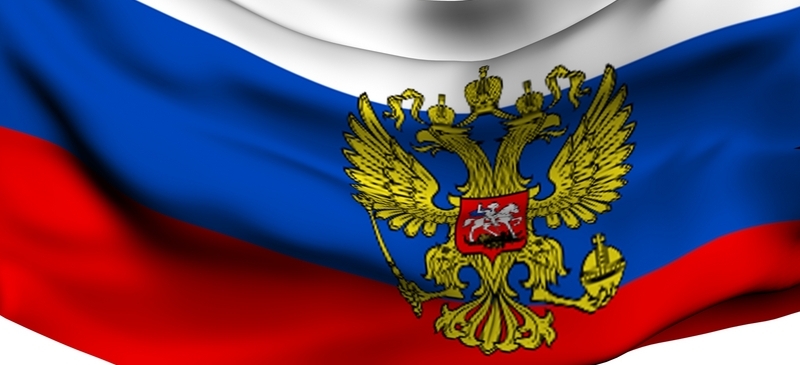
Russia shows continuing ambitions in CEE with pipeline
On March 12, Russia’s Stroytransgaz Group (SG) announced that it would be constructing a gas pipeline in the Republic of Macedonia. The company says the pipeline “will become part of a new gas pipeline system.”
The pipeline could bring Russian gas to Southeastern and Central Europe, potentially strengthening Moscow’s influence in the region and challenging Western-backed projects such as the Trans Adriatic Pipeline (TAP).
“This Macedonian pipeline is a sign that Moscow, in spite of the rhetoric about cancelling South Stream [a major Russian-owned gas pipeline], is not giving up on using energy to influence Southeastern Europe’s politics,” Rem Korteweg, senior research fellow at the think tank, Centre for European Reform, tells Monitor Global Outlook.
Mr. Korteweg says that the most significant potential impact of the pipeline would be driving a wedge between Greece – a potential regional gas transit hub – and the European Union and United States over energy policy and Russia’s role in the region.
The Macedonian pipeline will run 96.6 km from Klečovce in northern Macedonia to Negotino in the south center of the country. SG will build a 61 km stretch worth $75.7 million, which the company expects to complete by June 2016. This will be financed by the Russian Ministry of Finance as part of a debt repayment agreement between Russia and Macedonia.
SG is owned by Gennady Timchenko, known as an ally of Russian President Vladimir Putin. Mr. Timchenko was one of the first Russian businessmen to be targeted by US sanctions during the Crimea crisis. He is currently subject to sanctions by the European Union, however, which Macedonia is a candidate to join.
In December, Mr. Putin announced that Russia would be abandoning the South Stream project, majority-owned and driven by Kremlin-linked Gazprom, with partners including Italy’s Eni SpA, Austria’s OMV AG, Hungary's MVM Ltd., Slovenia’s Plinovodi d.o.o., Bulgarian Energy Holding EAD, Germany's Wintershall Holding GmbH (a subsidiary of BASF), and France’s EDF Group. The pipeline had run up against opposition from the European Commission, which said that it contravened European competition legislation.
Supporters of South Stream say that it would improve Europe’s energy security by bypassing troublesome Ukraine, while critics say that it would be a tool to increase Russia’s leverage in Central and Eastern Europe (CEE).
Macedonian pipeline could be part of larger project
In place of South Stream, Gazprom has announced that it will construct a pipeline with the same capacity – 63 billion cubic meters (BCM) a year – to Turkey. There has been speculation that this “Turkish Stream” project could link to a new “Balkan Stream” pipeline that would perform much the same way as South Stream.
“The Macedonian pipeline could be part of a bigger project based on Turkish Stream that substitutes South Stream to bring Russian gas to southeastern Europe,” says Korteweg. “But much remains unknown. As soon as Stroytransgaz or the Macedonian government make clear what the capacity of the pipeline is, we will know whether it is part of a South Stream replacement project, now informally referred to as Balkan Stream, or not. Balkan Stream would flow from the Greek-Turkish border through Macedonia, to Serbia and Hungary.”
Korteweg adds that a potential Balkan Stream project could undermine the viability of the EU- and US-backed Transadriatic Pipeline (TAP), which would carry gas across the Balkans and Adriatic to Italy. The gas would be supplied from gas fields in Azerbaijan operated by State Oil Company of Azerbaijan Republic (SOCAR) and Britain's BP Plc. TAP partners include BP (20 per cent), SOCAR (20 per cent), Norway's Statoil ASA(20 per cent), Belgium-based Fluxys (19 per cent), Spain's Enagás SA (16 per cent), and Switzerland-based Axpo Holding AG (5 per cent).
This, however, would require the Macedonian pipeline to carry a large amount of gas – 10-20 BCM or more. It is not clear what the capacity of the SG project will be.
According to Korteweg, despite the uncertainty surrounding the details of the Macedonian pipeline, the timing is significant. It indicates that Russia is still keen to compete in CEE particularly in EU non-member states like Macedonia and Serbia.
“More importantly, it puts pressure on the Greek government,” he tells MGO. “By convincing the Greeks that Turkish Stream and Balkan Stream are both viable, Moscow may tempt Greece to defy the EU and embrace Russia. The pipeline would be a cash cow for the Greek government, but drive a wedge between Athens and Brussels. Given the very tense relationship between Greece and Brussels, this is an option Athens might be interested to entertain.”
Still, a gas market analyst, who asked not to be named, tells MGO that the SG pipeline could be a boon to the regional energy sector, and competition – which in turn could push prices down for industrial and domestic gas consumers.
“European energy markets only benefit from further investment in pipeline interconnections,” the analyst says. “The SG pipeline could, in theory, offer additional gas marketing options to gas volumes associated with Azerbaijani supply, or Russia. As more competing sources of gas supply materialize in a specific area, the local gas markets begin to gain the benefits associated with the kinds of gas hubs that are more prominent in northwestern Europe.”
He adds that more pipeline access to markets in Southeastern Europe would improve the commercial prospects of capital-intensive projects including long-distance pipelines and LNG terminals like that at Revithoussa in Greece (which may be expanded) and that proposed at Krk in Croatia.
Rem Korteweg is a senior research fellow at the CER.
Monitor Global Outlook offers fact-based, "feet-on-the-street" analyses of daily events that can impact your investments, operations, and personnel in emerging and frontier countries. For a free 30-day trial, click here.
